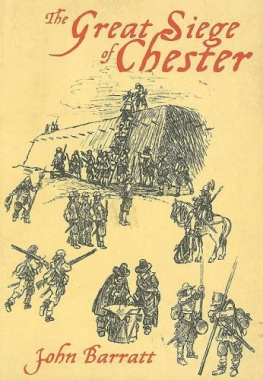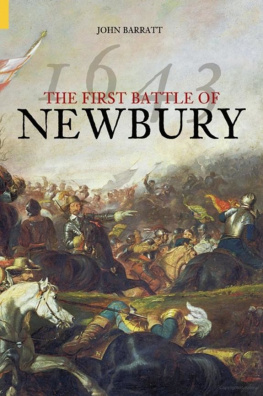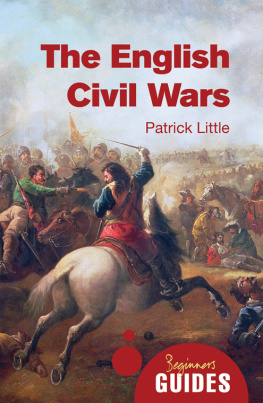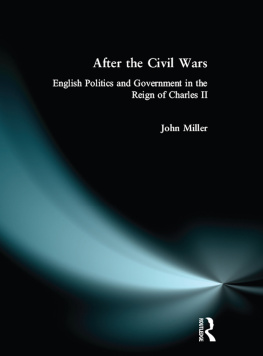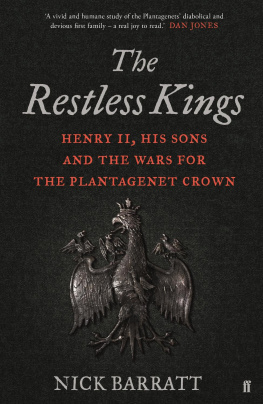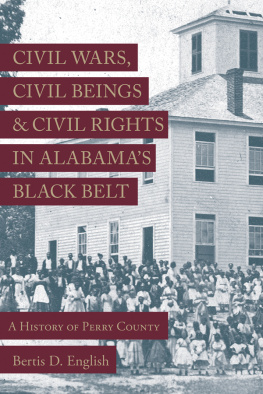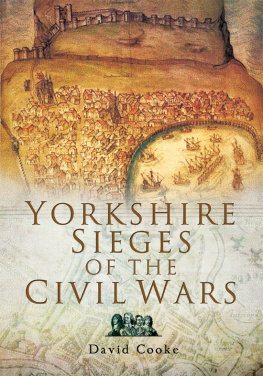

First published in Great Britain in 2008 by
Pen & Sword Military
an imprint of
Pen & Sword Books Ltd
47 Church Street
Barnsley
South Yorkshire
S70 2AS
Copyright John Barratt 2008
9781844684991
The right of John Barratt to be identified as Authors of this Work has been asserted by him in accordance with the Copyright, Designs and Patents Act 1988.
A CIP catalogue record for this book is available from the British Library
All rights reserved. No part of this book may be reproduced or transmitted in any form or by any means, electronic or mechanical including photocopying, recording or by any information storage and retrieval system, without permission from the Publisher in writing.
Typeset in Ehrhardt by Phoenix Typesetting, Auldgirth Dumfriesshire
Printed and bound in England by Biddles, Kings Lynn
Pen & Sword Books Ltd incorporates the Imprints of Pen & Sword Aviation,
Pen & Sword Maritime, Pen & Sword Military, Wharncliffe Local History,
Pen & Sword Select, Pen & Sword Military Classics and Leo Cooper.
For a complete list of Pen & Sword titles please contact
PEN & SWORD BOOKS LIMITED
47 Church Street, Barnsley, South Yorkshire, S70 2AS, England
E-mail: enquiries@pen-and-sword.co.uk
Website: www.pen-and-sword.co.uk
Introduction
The Civil Wars that ravaged the British Isles between 1641 1651 constitute the last great age of siege warfare in Britain. Hundreds of garrisons sprang up across the three kingdoms of England, Scotland and Ireland, and in many cases became a focus of prolonged siege operations. This book details the stories of a dozen such sieges, and of the men and women, soldiers and civilians, who willingly or otherwise were caught up in the bloody events that ensued.
I faced some difficult decisions on exactly which sieges to include and even more on which to omit out of the hundreds of possible choices. In the end I decided, reluctantly, to leave out some of those such as the sieges of Chester and York which have already been well documented by modern historians in favour of some lesser-known but equally interesting examples.
As usual, I must thank the staff of a number of libraries, notably those of the British Library and the Sydney Cohen Library, University of Liverpool, for their efficiency and patience. Charlotte Jones has skilfully deciphered my frequently illegible sketches to produce her excellent maps, and the team at Pen and Sword were, as ever, supportive and encouraging.
John Barratt
Henllan, 2008
Chapter One
The Military Background
The great battles of the English Civil Wars such as Edgehill, Marston Moor and Naseby have received a great deal of study, particularly over the last fifty years. Much less well known with the exception of notorious episodes such as the siege of Drogheda (1649) and the Bolton Massacre (1644) are the siege operations, which had a vital influence on the course of the war, and which included some of its most colourful and bloody episodes.
It has been estimated that some 300 sieges took place across the British Isles in the two decades spanning 1640 1660. Involving cities, towns, castles, and often hastily fortified manor houses, the resulting military operations are thought to have incurred around 21,000 casualties, totalling 31 per cent of those sustained by the Parliamentarians and 21 per cent of those suffered by the Royalists. The importance of siege warfare is highlighted by the fact that the First Civil War commenced in July 1642 with the unsuccessful Royalist siege of Hull, whilst the Second Civil War concluded with the fall of Pontefract Castle in March 1649. Indeed, over the whole Civil War period, siege operations occupied armies and senior commanders for much of the time. For example, during its first year of campaigning in 1645 1646 Parliaments New Model Army fought three major battles but a dozen sieges and stormings of defended garrisons; and Prince Rupert, best known in the popular imagination as a dashing cavalry commander, took part in six major field actions but around a dozen sieges and storms. Cromwells Irish campaign of 1649 1650 consisted almost entirely of siege operations.
Sieges also had a major influence on campaigns and the strategy of major field armies. The summer campaign of 1643, involving the main field armies of the King and Parliament, was initiated by the Royalist siege of Parliamentarian-held Gloucester. In the following year the threat presented to York by the Allied Parliamentarian and Scottish armies resulted in a relief march by Prince Rupert, culminating on 2 July 1644 in the greatest battle of the war at Marston Moor. On 14 June 1645 the decisive encounter at Naseby was a direct consequence of the Kings capture of Leicester two weeks earlier. The result of the Second Civil War in 1648 had partly revolved around the outcomes of the sieges of Pembroke and Colchester.
By the middle of the seventeenth century, after more than 100 years of almost continuous warfare, most of Europe was studded with fortifications, including major fortresses, castles, and settlements with defences of varying elaboration. But this was not the case with much of the British Isles. England had seen virtually no internal conflict since the battle of Stoke Field in 1487, which concluded the Wars of the Roses in favour of the Tudor dynasty. Scotland and Ireland had witnessed more strife, including foreign invasion, but had escaped relatively lightly in comparison with their European contemporaries. In England the most recently built fortifications a series of coastal forts inspired by the threat of French invasion had been erected by Henry VIII in the 1540s. The port of Hull had been refortified at the same time, although its design had been rendered obsolete by Continental advances even before completion. The only other permanent garrisons in England with fortifications worthy of modest European respect were those of Berwick upon Tweed (a constant bone of contention between a hostile England and Scotland) and the harbour of Portsmouth a likely French target in case of war. In 1545 the antiquarian writer John Leland listed between 500 and 600 castles in England and Wales. It has been estimated that around ninety-one of these were in sufficiently good condition to be in normal use, usually as civilian occupation. Of the others, 30 were partially derelict and 137 ruinous, whilst the state of the remainder is unclear.
Many towns in England and Wales had been fortified in the Middle Ages, and in some cases these defences originated in Roman times. Such fortifications might consist of a castle, with town walls and gates. Their condition varied. Some especially inland towns in the peaceful Midlands and South of England, for example Leicester and Newark were in a state of disrepair. Others mainly coastal towns like Plymouth and Portsmouth, likely to be in the forefront of any European conflict involving England were in somewhat better condition. The outbreak of the Irish rebellion of 1641 witnessed hasty efforts to refurbish the medieval fortifications of some Irish Sea-facing towns like Chester, together with several Welsh coastal castles. In Ireland, on the other hand, the threat of foreign invasion most recently by Spain in 1601 together with the ever-lurking possibility of rebellion, had resulted in both castle and town defences being kept in a somewhat better state of repair; whilst the turbulent state of Scottish affairs during the greater part of the sixteenth century resulted in fortifications there being maintained.




